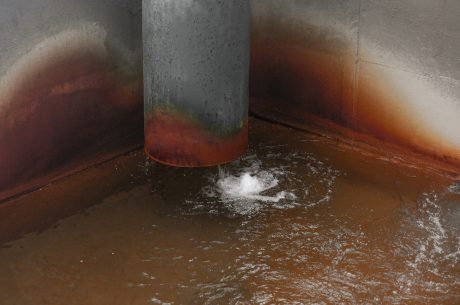
Basements are the most flood-prone areas of any home. After all, they are located below the ground’s surface. That’s why building codes in some states require the installation of exterior or interior French drains (aka drain tiles).
These systems are your best chance of averting flooding, water damage, and mold in the basement. But how can you know which type of system best meets your home’s needs? Here’s what you need to know.
Exterior French Drains
Exterior French drains are installed around the outside perimeter of a foundation. The drain consists of a flexible perforated drainpipe buried in a trench at the bottom of the foundation footing. Landscape fiber and gravel are put around the pipe to filter out dirt and sediments.
When water pools around the foundation walls, it enters the pipe and drains away to a sump pump inside the house – or by gravity, but your yard must have a steep incline for the system to easily drain water away.
Installing exterior drains is more troublesome because it involves removing and replacing landscaping, driveways, sidewalks, porches, decks, etc. Another drawback is that maintenance is difficult, involving expensive exterior excavation. The pipe is prone to clogging over time as it’s buried underneath several feet of soil.
Interior French Drains
An interior French drain also consists of a perforated pipe, but it’s installed around the perimeter of the basement floor. Like exterior drains, the perforated pipe is surrounded by gravel to filter out dirt and sediments. The pipe collects water from the basement wall floor joint as it enters and carries it to a sump pit where a pump removes it away from the foundation.
Installing interior drains in existing homes is not as disruptive and labor intensive as exterior drains. Preparation consist of removing belongings away from basement walls and using a jackhammer to remove concrete.
Moreover, maintenance of interior drains is easier because the pipe is more accessible. Also, the pipe is less prone to clogging because it’s not buried in several feet of dirt. Another plus is that interior systems are protected from the elements, soil conditions or roots growing into the drainage system. Also, they can be installed year-round, no matter the season.
Conclusion
Both exterior and interior French drains provide effective protection against flooding and water damage in your basement. Yet, due to the costs and difficulty of installing and servicing an exterior drain on existing houses, it may be better to install interior drains. (Note: if you’re building a new home, take into consideration your local building code). In any case, always consult a basement waterproofing specialist to determine the correct type of drainage system for your home.
If you need professional water damage repair and mold removal for a water-damaged basement, contact your local PuroClean office.



 Purofirst Fire & Water
Purofirst Fire & Water